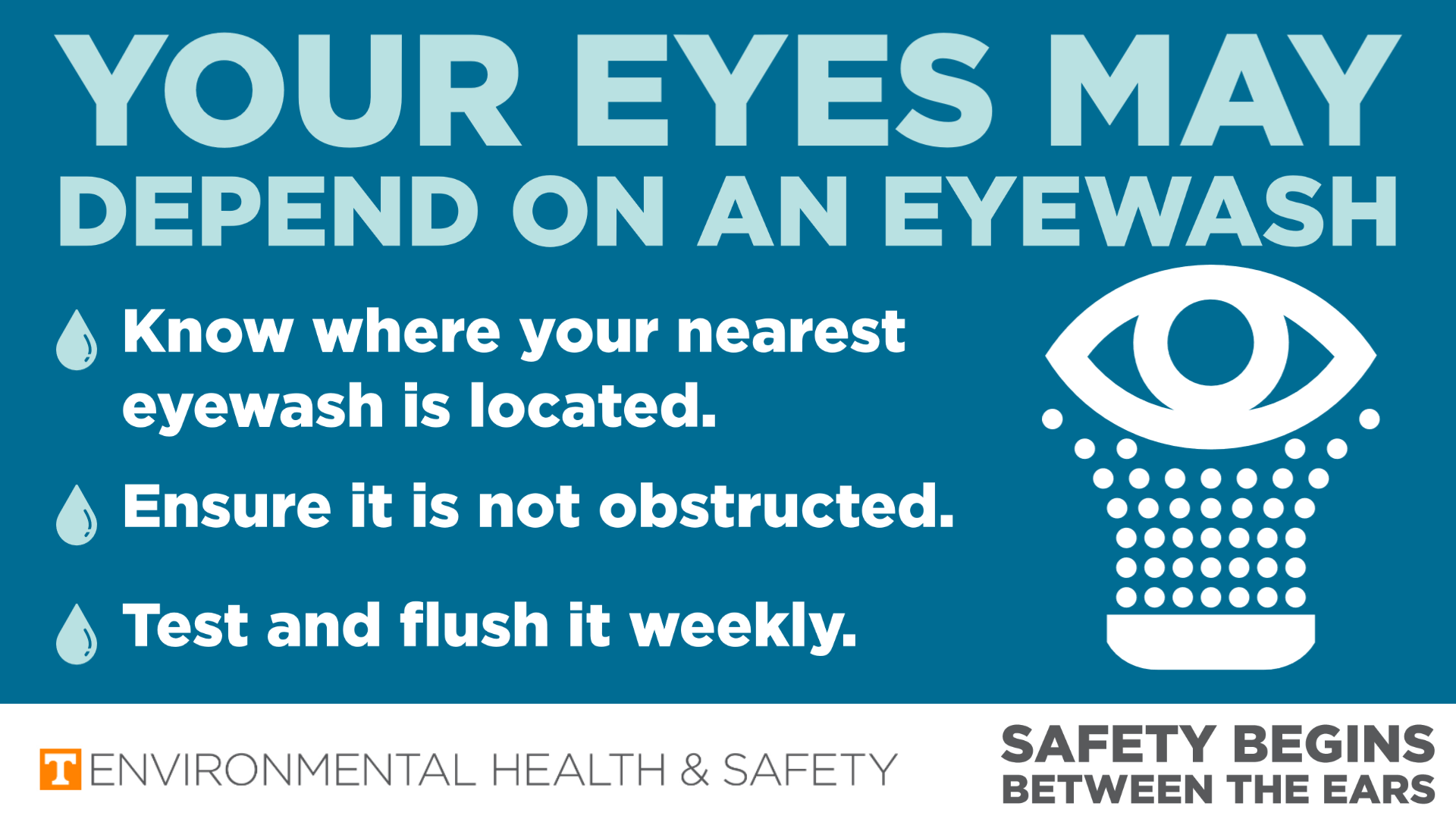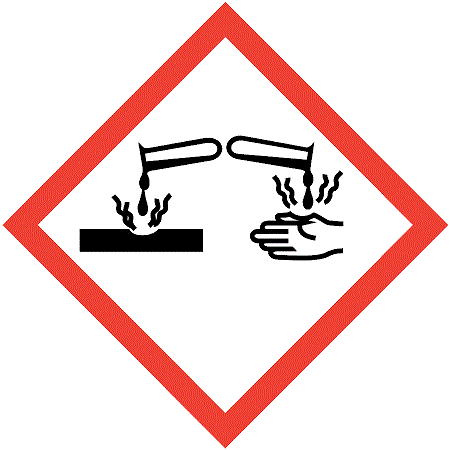An eyewash is an essential piece of emergency equipment when using corrosive chemicals. The Occupational Safety and Health Administration (OSHA) requires:
Where the eyes or body of any person may be exposed to injurious corrosive materials, suitable facilities for quick drenching or flushing of the eyes and body shall be provided within the work area for immediate emergency use.
It is important to know how to ensure that your eyewash is ready and available to do its job.

What can I do?
Know where your nearest eyewash is located.
Remember you might be unable to see due to injury to your eyes.
Ensure it is not obstructed.
Eyewashes are often installed at sinks, in hallways, or even in special safety stations installed into a wall. Sinks are especially busy areas and prone to obstructions. Make sure that no matter how busy your space gets you do not obstruct access to or operation of an eyewash.
Test and flush your eyewash weekly
An eyewash is only useful if it works and is clean. Testing and flushing weekly ensures that you know whether or not it is working and that the water in the lines is clean. In general, you are responsible for flushing your eyewash. If an eyewash is installed in a shared space such as a hallway, Facilities Services might be testing it weekly. If you suspect a problem contact Facilities Services.
Don’t know what a corrosive chemical is?
 The word corrosive refers to a chemical that can cause skin corrosion or burns, eye damage, or is corrosive to metals. They can be acids, oxidizers, or bases. When they come in contact with a surface, the surface deteriorates. The deterioration can happen in seconds to minutes, such as concentrated hydrochloric acid spilled on skin; or slowly over days or years, e.g. the rusting of iron in a bridge.
The word corrosive refers to a chemical that can cause skin corrosion or burns, eye damage, or is corrosive to metals. They can be acids, oxidizers, or bases. When they come in contact with a surface, the surface deteriorates. The deterioration can happen in seconds to minutes, such as concentrated hydrochloric acid spilled on skin; or slowly over days or years, e.g. the rusting of iron in a bridge.
Sometimes the word caustic is used as a synonym for corrosive.
The hazard communication pictogram or symbol for corrosive chemicals displays a chemical damaging tissue (a hand) or metal.